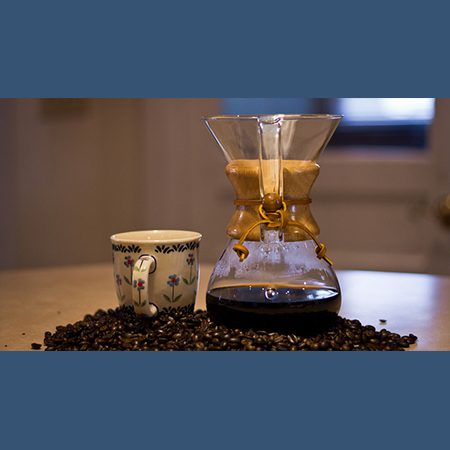 Yes, the art of pour over coffee is more meticulous than pressing the “on” button on your coffee maker. And yes, the pour over coffee method has often been reserved for those perceived to be coffee “snobs.” At Sasquatch Coffee, we aren’t “snobby,” per se, but we do have a great deal of love and appreciation for one thing: a great cup of coffee. The science and method behind pour over coffee supports that the result is a cup of coffee with full and bright flavors. Learn about the practice and costs of pour over coffee:
Yes, the art of pour over coffee is more meticulous than pressing the “on” button on your coffee maker. And yes, the pour over coffee method has often been reserved for those perceived to be coffee “snobs.” At Sasquatch Coffee, we aren’t “snobby,” per se, but we do have a great deal of love and appreciation for one thing: a great cup of coffee. The science and method behind pour over coffee supports that the result is a cup of coffee with full and bright flavors. Learn about the practice and costs of pour over coffee:
How It Works
The idea is pretty straight-forward — grind your coffee beans, add coffee grounds to the (rinsed) paper cone inserted inside the pour-over container, and pour water carefully over top. The resulting coffee that collects in the carafe or coffee cup reservoir is bright, flavorful coffee that should highlight the best of the roast’s flavor without any of the bitterness. Details such as how hot your heat your water, your water-to-coffee ratio, how much you rinse your filter, and your rate and style of pour are entirely up to you. Fortunately, the Internet is full of advice on the topic of how to brew Chemex coffee.
If hand-pouring water over your coffee grounds seems arduous, take heed of some coffee-expert advice. Jesse Raub, author of the java-enthusiast website Bitter Press, tells us that “regular drip coffee makers don’t evenly wet the coffee grounds, which leaves your coffee unevenly extracted. Hand-pouring the water offers you an easy, controlled method for ensuring even distribution.”
Cost Breakdown
It’s hard to argue against the elegant simplicity of the pour-over coffee maker itself. Among the most iconic modern pour-over brands are the Chemex (pronounced “KEM-ex”) and Hario. Chemex is a favorite among pour-over enthusiasts and fans of simple design for its handmade simplicity; in fact, the Chemex is featured in a MoMA collection of objects designed by Peter Schlumbohm, a German innovator who was known for creating simple, usable products for the home. At approximately $35 for an 8-cup carafe, the Chemex seems like a relative bargain compared to high-end coffee makers.
Chemex paper filters cost $8.50 for 100, which a bit less than 10 cents per filter. If you’re not a fan of paper filters, the current “It Girl” of pour-over accessories is the Coava Kone, a metal filter design to mimic the function of a paper filter, while allowing more aromatic oils to seep through during brewing. Reviewers have generally reported that the Kone produces less sediment than other metal filters. At $55, you can be forgiven for hesitating. But consider that you will never have to worry about running out of paper filters on a lazy weekend again, and the Coava Kone might seem like a relative bargain. And really when you add up the cost ($35 + $55 + shipping), you’re still looking at about $100 for a coffee maker that should last a lifetime.
The advantage of a pour-over coffee maker (instead of a French press or percolator) should be obvious — the Chemex and Hario are much easier to clean and don’t involve nuts and bolts. The Coava Kone can be run through the dishwasher, although more fastidious owners prefer to hand-wash their entire coffee brewing apparatus. And wash it you must, because one of the side effects of an inexpertly cleaned coffee making apparatus is bitter, burnt-tasting coffee (the result of rancid oils that need to be scrubbed away after each use).
Pour-Over Coffee: Pros
- Clean, minimalist design
- No moving parts to break
- Generally cheaper than electric coffee makers
- Easy to maintain, can be washed in dishwasher
- Greater control of coffee flavor outcomes
- No hot plate means your coffee doesn’t continue to cook after brewing
Pour-Over Coffee: Cons
- More work-intensive
- You officially become a coffee snob
SRC: Read the full article about pour over here: www.wisebread.com/pour-over-coffee-better-than-brewed